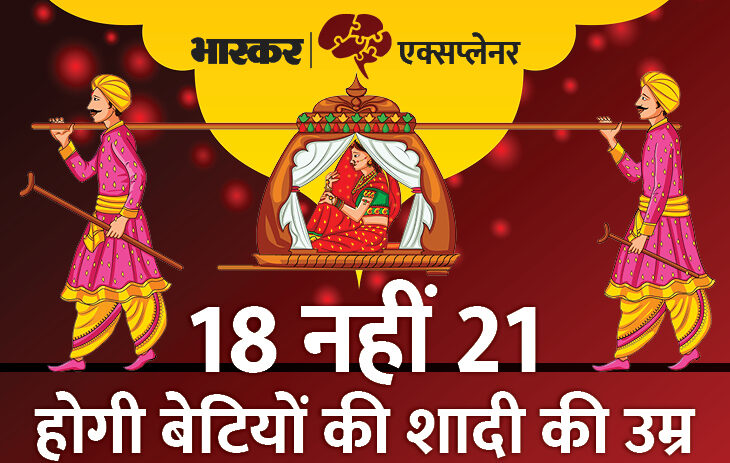AGE OF MARRIAGE
AGE OF MARRIAGE

CONTEXT
- Union Cabinet passed a proposal to raise the legal age of marriage for women from 18 to 21 years — the same as men.
- It is based on recommendations submitted to Niti Aayog in December 2020 by the Centre’s task force, headed by Jaya Jaitly, which was constituted to examine “matters pertaining to age of motherhood, imperatives of lowering MMR (Maternal Mortality Rate), improvement of nutritional levels and related issues”.
WHY IS THERE A MINIMUM AGE OF MARRIAGE?
- Essentially outlaw child marriages and prevent the abuse of minors.
- Personal laws of various religions that deal with marriage have their own standards, often reflecting custom.
- For Hindus, The Hindu Marriage Act, 1955 sets 18 years as the minimum age for the bride and 21 years as the minimum age for the groom. In Islam, the marriage of a minor who has attained puberty is considered valid.
- The Special Marriage Act, 1954 and the Prohibition of Child Marriage Act, 2006 also prescribe 18 and 21 years as the minimum age of consent for marriage for women and men, respectively.
- For the new age of marriage to be implemented, these laws are expected to be amended.
WHY RE-EXAMINE THE AGE OF MARRIAGE?
- Decided to re-examine the age of marriage for women for a number of reasons, including gender-neutrality.
- An early age of marriage, and consequent early pregnancies, also have impacts on nutritional levels of mothers and their children, and their overall health and mental wellbeing.
- It also has an impact on Infant Mortality Rate and Maternal Mortality Rate, and the empowerment of women who are cut off from access to education and livelihood after an early marriage.
- The recently released National Family Health Survey (NFHS) revealed that child marriage has come down marginally from 27 per cent in 2015-16 to 23 per cent in 2019-20 in the country, but the government has been pushing to bring this down further.
- Women’s age of marriage was increased from 15 years to 18 years in 1978, by amending the erstwhile Sharda Act of 1929. As India progresses further, opportunities open up for women to pursue higher education and careers.
- There are imperatives of lowering MMR as well as improvement of nutrition levels. Entire issue about the age of a girl entering motherhood needs to be seen in this light
JAYA JAITLY COMMITTEE
In June 2020, the Ministry for Women and Child Development set up a task force to look into the correlation between the age of marriage with issues of women’s nutrition, prevalence of anemia, IMR, MMR and other social indices.
The committee was to look at the feasibility of increasing the age of marriage and its implication on women and child health, as well as how to increase access to education for women. The committee was to also recommend a timeline by which the government could roll out the implementation of the policy, as well as the amendments that would need to be made in existing laws in order for this to happen.
The committee has recommended
- Age of marriage be increased to 21 years, on the basis of feedback they received from young adults from 16 universities across the country. Over 15 NGOs were also engaged to reach out to young adults in far-flung areas and marginalised communities.
- Asked the government to look into increasing access to schools and colleges for girls, including their transportation to these institutes from far-flung areas. Skill and business training has also been recommended, as has sex education in schools.
- Deliveries must come first, as, unless they are implemented and women are empowered, the law will not be as effective.
- Awareness campaign be undertaken on a massive scale on the increase in age of marriage, and to encourage social acceptance of the new legislation, which they have said would be far more effective than coercive measures.
CRITICISMS
- A legislation would push a large portion of the population into illegal marriages.
- Even with the legal age of marriage for women being kept at 18 years, child marriages continue in India and a decrease in such marriages has not been because of the existing law but because of increase in girl’s education and employment opportunities.
- Law would end up being coercive, and in particular negatively impact marginalised communities, such as the Scheduled Caste and Scheduled Tribes, making them law-breakers.

